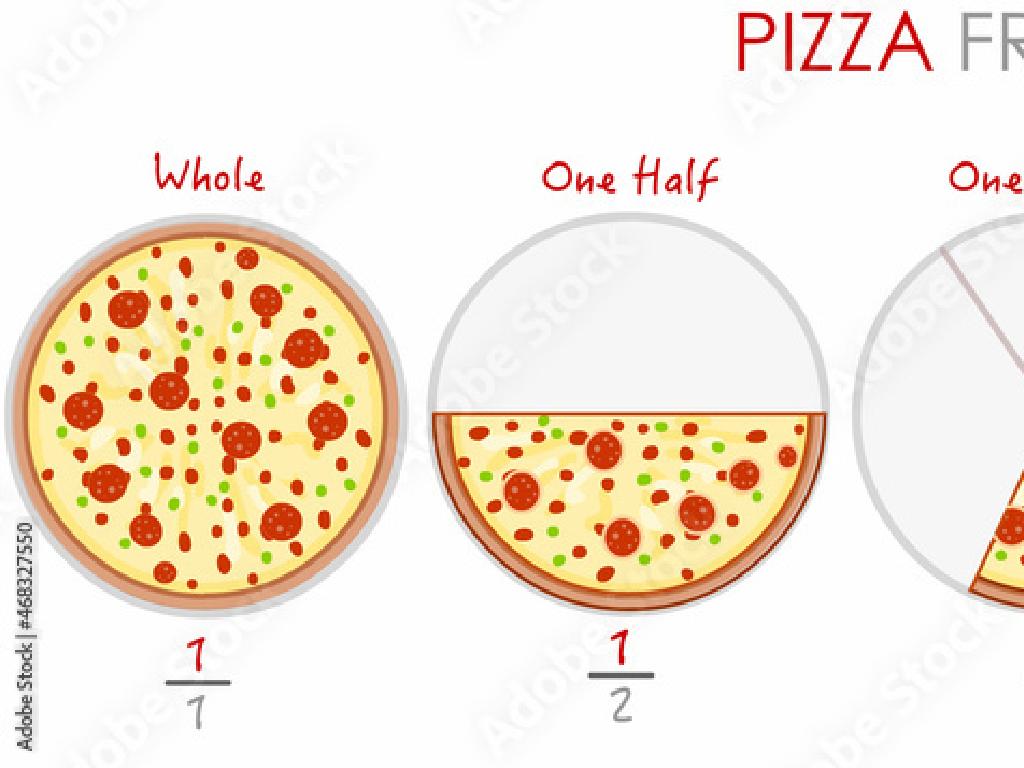Animal Cell Diagrams: Label Parts
Subject: Science
Grade: Eighth grade
Topic: Cells
Please LOG IN to download the presentation. Access is available to registered users only.
View More Content
Exploring Animal Cells: The Building Blocks of Life
– Cells: Life’s foundational units
All living organisms are made up of cells, the smallest unit of life.
– Animal cells: Complex structures
Animal cells have unique parts like the nucleus, mitochondria, and more.
– Cell components and functions
Each part of the cell has a specific role, like energy production or growth.
– Labeling parts: A closer look
We’ll identify and label each part, enhancing our understanding of cell biology.
|
This slide introduces the concept of cells as the basic unit of life, focusing on animal cells. It’s crucial to explain that while all cells share certain characteristics, animal cells have distinct structures that perform various functions necessary for life. Emphasize the importance of each component, such as the nucleus for storing DNA, mitochondria for energy, and lysosomes for waste removal. Encourage students to observe the detailed diagram of an animal cell and practice labeling the different parts to solidify their understanding of cell anatomy and physiology. This foundational knowledge is essential for their further studies in biology.
Exploring the Animal Cell
– Define a biological cell
– The smallest unit of life, fundamental to all organisms.
– Cells as life’s building blocks
– Cells perform essential functions to sustain life.
– Compare animal and plant cells
– Animal cells lack a cell wall and chloroplasts unlike plant cells.
– Unique features of animal cells
– Animal cells have lysosomes and centrioles, unlike plant cells.
|
Begin the presentation by defining a cell as the basic structural, functional, and biological unit of all living organisms. Explain that cells are the building blocks of life, with each cell performing vital functions necessary for the organism’s survival. Highlight the differences between animal and plant cells, such as the presence of a cell wall and chloroplasts in plant cells, which are absent in animal cells. Emphasize the unique features of animal cells, such as lysosomes and centrioles, and their roles. This slide sets the foundation for understanding the complexity and diversity of cell structures in different organisms.
Exploring the Animal Cell
– Characteristics of animal cells
– Eukaryotic, lack cell walls, contain organelles
– Role of the cell membrane
– Semi-permeable, controls movement in/out
– Cytoplasm: Cell’s functional arena
– Gel-like substance, houses organelles
– Labeling key cell components
|
This slide provides an overview of the animal cell, highlighting its key characteristics, the function of the cell membrane, and the role of the cytoplasm. Emphasize that unlike plant cells, animal cells do not have a cell wall and have a variety of organelles that perform different functions. The cell membrane is crucial as it regulates the entry and exit of substances, maintaining the cell’s integrity. The cytoplasm is where most cellular activities occur, containing enzymes that facilitate metabolic processes. Encourage students to familiarize themselves with the cell’s layout and functions as they will be expected to identify and label the main parts of an animal cell diagram in future lessons.
Exploring Animal Cell Organelles
– Nucleus: Commanding the cell
– The nucleus contains DNA and regulates cell activities.
– Mitochondria: Cellular energy source
– Mitochondria create ATP, the cell’s energy currency.
– ER & Golgi: Synthesis and shipping
– Endoplasmic Reticulum synthesizes proteins/lipids; Golgi apparatus sorts and packages them.
– Lysosomes & Peroxisomes: Waste management
– Lysosomes digest cellular waste; peroxisomes break down toxic substances.
|
This slide provides an overview of the key organelles within an animal cell and their functions. The nucleus acts as the control center, housing genetic material and overseeing cell operations. Mitochondria are responsible for producing energy through ATP, vital for cellular functions. The endoplasmic reticulum (ER) works closely with the Golgi apparatus to produce, process, and transport proteins and lipids. Lysosomes and peroxisomes play crucial roles in breaking down waste and detoxifying harmful substances, respectively. Encourage students to draw and label these organelles in an animal cell diagram and understand their interrelated functions in maintaining cellular health.
Labeling the Animal Cell
– Identify each cell organelle
– Nucleus, mitochondria, ribosomes, etc.
– Functions of organelles
– Nucleus: stores DNA; Mitochondria: energy production
– Organelle roles in cell life
– Each part ensures cell survival and function
– Significance of cellular structure
|
This slide aims to introduce students to the complex structure of animal cells and the roles of each organelle. Start by identifying each part of the cell, such as the nucleus, mitochondria, ribosomes, endoplasmic reticulum, and more. Discuss the specific function of each organelle, for example, how the nucleus is the control center of the cell, storing genetic material, and how mitochondria are the powerhouses, providing energy. Emphasize the importance of each part in maintaining the life and health of the cell, and how the intricate interplay of these organelles is crucial for cellular operations. Encourage students to think about how each component contributes to the overall function of the cell, drawing parallels to how different organs in their bodies have specific roles.
Animal Cell vs. Plant Cell: Key Differences
– Distinct features of animal cells
– Animal cells have flexible membranes and lack a cell wall.
– Unique characteristics of plant cells
– Plant cells contain chloroplasts and have rigid cell walls.
– Significance of cellular differences
– These variations are crucial for their specific functions and survival.
– Examples of animal and plant cells
– Muscle cells in animals, leaf cells in plants.
|
This slide aims to highlight the fundamental differences between animal and plant cells, which are essential for understanding cell structure and function. Animal cells are known for their flexible cell membrane and lack of a cell wall, which allows for a variety of shapes and is important for movement and expansion. Plant cells, on the other hand, have a rigid cell wall for structure and chloroplasts for photosynthesis. Understanding these differences is vital for comprehending how cells contribute to the overall functioning of each organism. Provide examples such as muscle cells for animals, which require elasticity, and leaf cells for plants, which perform photosynthesis. Encourage students to think about how these differences affect the life processes of each organism.
Understanding Cells Through a Microscope
– Operating a microscope correctly
– Preparing an animal cell slide
– Use a thin slice of tissue, add dye for visibility
– Observing cells under the microscope
– Adjust the lens to bring cells into focus
– Identifying cell organelles
– Look for nucleus, mitochondria, and other structures
|
This slide aims to guide students through the process of using a microscope to observe animal cells. Start by demonstrating the proper way to handle and operate a microscope. Explain the steps of preparing a slide with animal cells, including the application of a stain to make organelles visible. Once students are observing the cells, instruct them on how to adjust the microscope for the clearest view. Encourage them to identify and label the various organelles within the animal cells, such as the nucleus, mitochondria, and endoplasmic reticulum. Provide diagrams for reference and ensure they understand the function of each organelle they observe.
Class Activity: Build Your Own Animal Cell Model
– Gather materials for cell model
– Use clay, beads, and labels for parts like the nucleus, mitochondria, etc.
– Follow steps to build cell model
– Shape the cell, add organelles, and use labels to identify them
– Label each part of your cell
– Attach labels to your model, including nucleus, cytoplasm, and more
– Discuss the function of each part
– Share what each labeled part does in the cell
|
This activity is designed to help students understand the structure of an animal cell by creating a 3D model. Provide a list of materials such as clay, beads, or yarn to represent different cell organelles. Step-by-step instructions should guide the students through the process of constructing the cell and placing organelles in the correct position. Once the model is built, students will label each part, such as the nucleus, mitochondria, and endoplasmic reticulum. Encourage students to discuss the function of each part they label. Possible variations of the activity could include using different materials, working in groups, or presenting their model to the class. This hands-on experience will reinforce their understanding of cell anatomy and function.
Quiz Time: Label the Animal Cell
– Identify cell organelles
– Label each part correctly
– Discuss organelle functions
– Mitochondria: powerhouses, Nucleus: control center
– Demonstrate understanding
|
This slide is designed to assess students’ understanding of the animal cell structure and function. Students will be given a diagram of an animal cell and asked to identify and label each organelle. They should also be prepared to discuss the role of each organelle, such as the mitochondria being the powerhouse of the cell and the nucleus acting as the control center. This activity will help reinforce their knowledge of cell biology and ensure they can visually identify and understand the function of each part of an animal cell. Encourage students to use their notes and textbooks to assist them in this quiz. After the quiz, review the answers as a class to ensure comprehension.
Animal Cell: Recap and Importance
– Review of animal cell parts
– Recall the nucleus, mitochondria, etc.
– Functions of each cell component
– Understand roles like energy production
– Cells as biology’s building blocks
– Recognize cells as life’s foundation
– Upcoming: Plant Cell Structures
|
This slide aims to consolidate the students’ knowledge of animal cell parts and their functions, emphasizing the role of each component, such as the nucleus for storing DNA and mitochondria for energy production. Highlight the significance of cells as the fundamental units of life and their importance in the study of biology. Prepare students for the transition to the next lesson by briefly mentioning that they will explore plant cell structures, noting the similarities and differences they will encounter compared to animal cells. Encourage students to review their notes and diagrams to reinforce their understanding.






